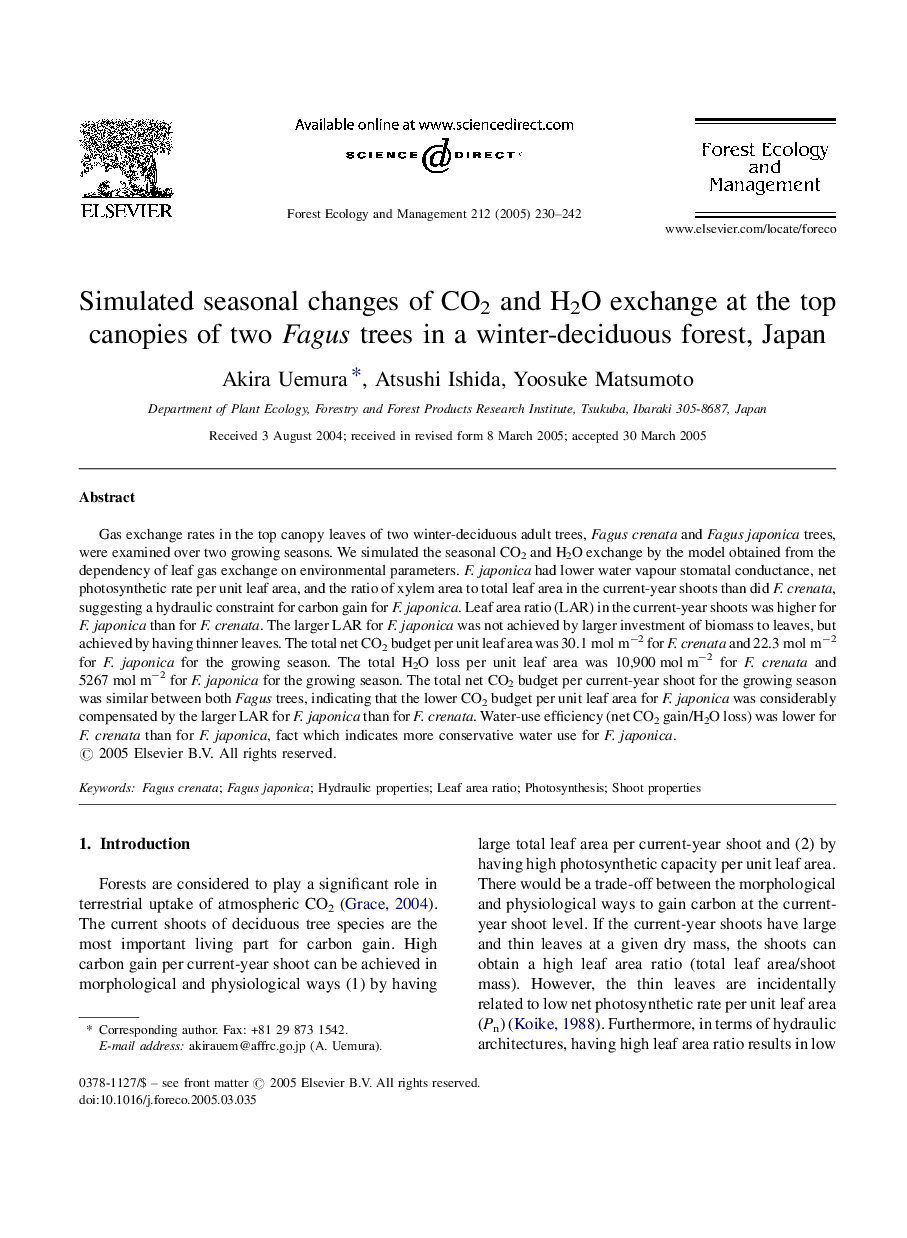| Article ID | Journal | Published Year | Pages | File Type |
|---|---|---|---|---|
| 9620313 | Forest Ecology and Management | 2005 | 13 Pages |
Abstract
Gas exchange rates in the top canopy leaves of two winter-deciduous adult trees, Fagus crenata and Fagus japonica trees, were examined over two growing seasons. We simulated the seasonal CO2 and H2O exchange by the model obtained from the dependency of leaf gas exchange on environmental parameters. F. japonica had lower water vapour stomatal conductance, net photosynthetic rate per unit leaf area, and the ratio of xylem area to total leaf area in the current-year shoots than did F. crenata, suggesting a hydraulic constraint for carbon gain for F. japonica. Leaf area ratio (LAR) in the current-year shoots was higher for F. japonica than for F. crenata. The larger LAR for F. japonica was not achieved by larger investment of biomass to leaves, but achieved by having thinner leaves. The total net CO2 budget per unit leaf area was 30.1 mol mâ2 for F. crenata and 22.3 mol mâ2 for F. japonica for the growing season. The total H2O loss per unit leaf area was 10,900 mol mâ2 for F. crenata and 5267 mol mâ2 for F. japonica for the growing season. The total net CO2 budget per current-year shoot for the growing season was similar between both Fagus trees, indicating that the lower CO2 budget per unit leaf area for F. japonica was considerably compensated by the larger LAR for F. japonica than for F. crenata. Water-use efficiency (net CO2 gain/H2O loss) was lower for F. crenata than for F. japonica, fact which indicates more conservative water use for F. japonica.
Related Topics
Life Sciences
Agricultural and Biological Sciences
Ecology, Evolution, Behavior and Systematics
Authors
Akira Uemura, Atsushi Ishida, Yoosuke Matsumoto,
